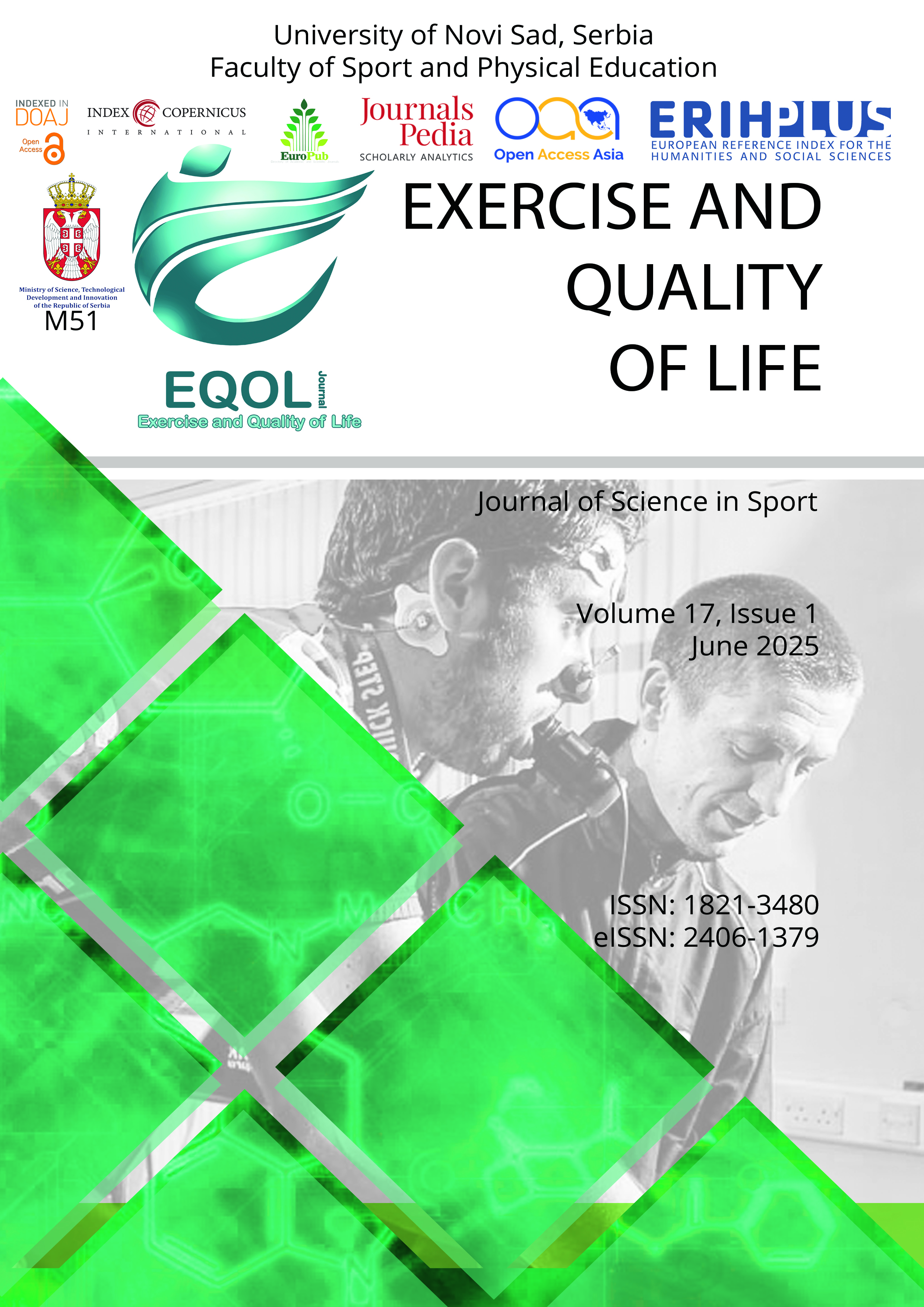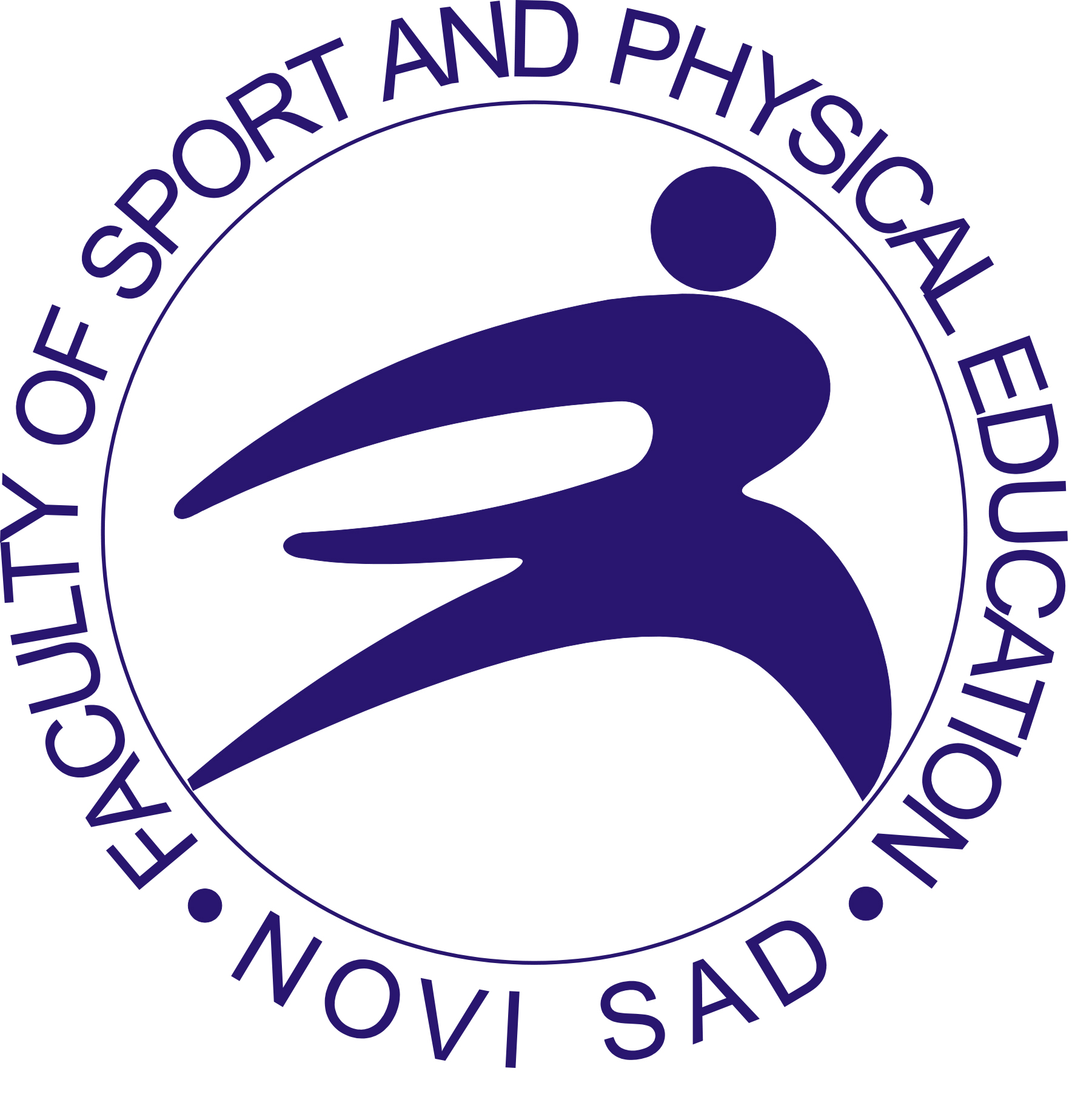Current issue

Volume 17, Issue 1, 2025
Online ISSN: 2406-1379
ISSN: 1821-3480
Volume 17 , Issue 1, (2025)
Published: 15.06.2025.
Open Access
All issues
Contents
15.12.2024.
Original scientific paper
Exploring self-declared prohibited substance use in combat sports: The Serbian perspective
The exploratory study is grounded in field research, utilizing semi-structured interviews with active, former, and recreational athletes in combat sports. The first section outlines key theoretical frameworks that address everyday life, lifestyles, and the issue of doping. The second section presents the main findings from the field research. Interviewees detailed the positive effects of doping on athletic performance while also acknowledging significant side effects, including physical and psychological consequences. Participants highlighted that the availability of information on doping has increased with the advent of the Internet and specialized retail outlets. The testimonies indicate that the culture of doping is driven not only by the pursuit of enhanced sports performance but also by aesthetic considerations and social pressures, underscoring the complexity of doping use in both professional and recreational sports. The study concludes that doping is a pervasive issue in combat sports, necessitating comprehensive social action and collaboration among policymakers, social stakeholders, and researchers across multiple disciplines, with a prominent role for physical education and sports sciences.
Vuk Raonić, Ivana Milovanović, Roberto Roklicer, Marko Manojlović, Tatjana Trivić, Patrik Drid
09.12.2024.
None of above
Abstracts from the 3rd International Scientific Conference on “Novelties in Sport Science”
We are delighted to invite you to the 3rd International Scientific Conference “Novelties in Sport Science.” This event serves as a premier platform for researchers, practitioners, and enthusiasts to exchange ideas and explore the latest advancements in sports science.
The conference showcases a diverse range of topics, reflecting the dynamic and evolving nature of this field. From the role of probiotics in athletic performance to the ethical contrasts between martial arts and Western sports, the proceedings highlight a balance between tradition and innovation. Cutting-edge tools like the "Ski Easy" methodology and transformative findings in injury prevention and active aging underscore the impact of science on physical activity and health.
This year, special attention is given to sustainability and inclusivity. Presentations on sustainable sports tourism in Vojvodina and environmentally responsible sports practices emphasize the alignment of sports science with the United Nations' Sustainable Development Goals. Other contributions delve into the intersection of education and technology, exploring topics such as teaching English to sports professionals and using wearable devices to enhance cardiovascular health.
The global contributions at this conference reflect a shared mission to foster collaboration and innovation. From improving injury recovery to engaging youth through cognitively enriched activities and advancing talent identification tools, these studies demonstrate the power of sports science to enhance quality of life across diverse populations.
We extend our sincere gratitude to the authors, reviewers, and organizing committee for their invaluable efforts. Let this event inspire meaningful dialogue, foster international partnerships, and drive new advancements in our field.
Together, we continue to push the boundaries of sports science, ensuring its relevance in an ever-changing world.
Patrik Drid and Damjan Jakšić
Patrik Drid, Damjan Jakšić
15.06.2021.
Original scientific paper
Somatotypes and handgrip strength analysis of elite Serbian sambo athletes
The aim of this study was to establish whether there are differences between weight categories in different anthropometric measurements and handgrip strength between elite Serbian male and female sambo athletes divided into weight categories. A total of 70 elite Serbian sambo athletes participated in the study, who were participants of the World Cadet Sambo Championship held in Novi Sad. Athletes are classified into categories according to gender and official weight categories. Using anthropometry, we calculated somatotypes and hand-grip strength. For statistical analysis, we used a one-way analysis of variance and Tukey’s post hoc tests to compare group differences by weight categories. Somatotype analysis shows that a typical somatotype in male sambo athletes was endomorphic mesomorphs. In female groups, the most common somatotype in the lightest categories was mesomorphic ectomorphs, and in the heaviest categories were endomorphic mesomorphs. Examining the handgrip for both left and right hand, as well as in total, shows that there is a statistically significant difference between the categories. In total, the strength of the handgrip increases progressively in groups. In male categories, the difference exists between the first 4 groups and -78kg, as well as between -42kg and -46kg and the heaviest weight category. Differences between weight categories in female athletes were found between the lightest group and last six groups in total, in favor of the last six. Anthropometric measurements revealed a statistically significant difference between weight categories. Mesomorphy was the most dominant somatotype in male categories, while female athletes differed concerning weight category. The achieved results can serve as data to compare the somatotype and handgrip strength of elite sambo athletes on a national and international level. These findings suggest that the handgrip strength and somatotypes are the keys to success in relation to the weight category.
Jelena Slankamenac, Tatjana Trivić, Damjan Jakšić, Miodrag Drapšin, Nemanja Lakićević, Patrik Drid
15.12.2019.
Original scientific paper
Isokinetic performance of shoulder external and internal rotators in judo and karate female elite athletes
The aim of this study was to determine the isokinetic profile of shoulder internal and external rotators in judo and karate female elite athletes.; Methods: Study sample consisted of senior 13 female karate athletes (21.23 ± 2.83 years) and 13 female judokas (21.00 ± 2.51 years). For testing the isokinetic muscle strength of the external and internal rotation of the shoulder joint, the HUMAN NORM isokinetic dynamometer has been used. Testing the maximum muscle strength of subjects was carried out at an angular speed of 60º / sec and 180 º / sec; Results: Judo female athletes had higher isokinetic peak torque for right and left shoulder internal rotators than karate athletes at 60º/s and 180º/s, with a large effect size, Cohen’s d = 0.89, 1.02, 0.97, 0.95, respectively. Also, large differences were observed between the judo and karate subjects in peak muscle torques of the right shoulder external shoulder rotator muscles of both limbs were greater in judokas than karate athletes. Isokinetic testing should be an integral part of training process in combat sports because in order to decrease the number of injuries and improve performance.
Miodrag Drapšin, Nebojša Trajković, Dragan Atanasov, Danilo Radanović, Milka Imbronjev, Roberto Roklicer, Dejan Madić, Nebojša Maksimović, Vuk Raonić, Tatjana Trivić, Patrik Drid
15.06.2018.
Original scientific paper
Long-term outcomes of sports on health status: A mini review
This article represents a review of the existing literature on possible long-term effects of sport participation at high-level on health. Search of databases was performed through Web of Science and Science Direct including following keywords: metabolic risk factor/syndrome, diabetes mellitus and cardiovascular health. Former athletes tend to adopt healthier lifestyles, which may give them an advantage in relation to risk factors taking into account metabolic risk factor/syndrome, diabetes mellitus and cardiovascular health. Health benefits of physical activities, moreover, depends of engagement at recommended levels, even in subjects who have never been athletes.
Sunčica Poček, Tatjana Trivić, Roberto Roklicer, Sergej Ostojić, Patrik Drid
01.12.2016.
Original scientific paper
Physiological responses during arm and leg aerobic power tests in elite female judokas
The aim of this study was to compare physiological responses during arm and leg aerobic power tests. Ten elite female judokas of the Serbian National Team participated in the study. In addition to the Special Judo Fitness Test (SJFT), maximal oxygen uptake (VO2max) and anaerobic threshold (AT) were determined using an arm crank ergometer and a treadmill. Body fat percentage was estimated by bio-impedance. The VO2max was only 3 ml∙kg–1∙min–1 higher on the treadmill than in the arm crank (p<0.03), the AT was also higher on the treadmill test (8.6 l∙min1, p=0.005). Nevertheless, the SJFT results were significantly correlated only with the maximal heart rate during the treadmill test (r=0.77, p<0.01 for index; r=-0.73, p<0.02 for total throws). Body fat percentage was correlated with VO2max (r=-0.67, p<0.05) and AT in the arm crank test (r=-0.88, p=0.001). The maximal oxygen uptake was not statistically correlated with the SJFT results in elite female judokas. However, judokas who had higher maximal heart rate during the treadmill test, showed a worse judo-specific capacity on the SJFT. Female judokas with higher body fat seem to have lower VO2max and AT, with statistically significant correlations in the arm crank, and close to significance on the treadmill. On the other hand, arm crank and treadmill tests presented different results concerning aerobic capacity. However, our female judokas interestingly presented similar VO2max results during both aerobic tests, which highlights some judo-specific demands on the upper-body aerobic fitness.
Tatjana Trivić, Cristina Casals, Patrik Drid























